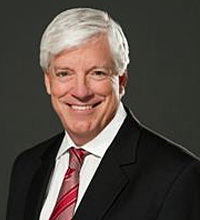Thanks to Patricia Annino of Prince Lobel Tye, LLP and James Rappaport of the New Boston Fund, Inc. for this week’s article on boundaries and how they might snap — or not.
In every family business, the three-circle model (Tagiuri & Davis 1982) is a well-known and respected visual of the relationship among family, business, and ownership. In the diagram, each of these distinctions has its own circle, where there is some overlap, and where the boundaries between and among the circles are solid. In real life, however, those boundaries are elastic, and when pushed, they can snap in ways that create significant distance. The challenge for those of us who advise family enterprises is determining how to keep the boundaries elastic, but not let them snap. It is therefore critical that we develop a resilient approach to the elasticity of the boundaries.
In reality, the intersections between these circles are where conflict and chaos lie. A truly sustainable system allows the boundaries among family, ownership, and business to flex, bend, and absorb the occasional shocks. A sustainable system that contains dynamic and elastic boundaries is both healthy and essential. The key, however, is to clearly establish those boundaries and monitor them with a fluid perspective. In a sustainable system there is a balance of power among the three circles – no one circle is more important than another. It is an understanding and diagnosis of the system approach to the three circles that leads to sustainability.
When we focus on the “action” that takes place on boundaries, it is important to understand that those actions are what keeps the system moving – either forward or backward. This is true for any system. Physical, economic, and social systems all operate in the region between order and chaos. The boundary intersection of the circles is where innovation, creativity, change, and destruction lie. When a boundary is damaged beyond repair, the system fails… yet it can be refigured. It is a different perspective to focus on the boundaries than it is to focus on the circles themselves.
The most common issues family businesses face at the intersection of their boundaries include: competition, guilt, the need for a powerful legacy, jealousy, seeking approval (from living people and the ghosts of past authority figures), sand box secrets, generational dynamics, blended family complexities and advisor blocks. Additional stressors that impact these boundaries include mental illness, substance abuse, dementia, narcissism, poor financial planning and an unrealistic sense of financial realities. These boundary-related issues can flare with comments from the “peanut gallery” (those who have a stake in the outcome, but lack sufficient competencies for their roles); an inability to look in the mirror and take personal responsibility; and control issues between parents and children, and amongst siblings and step-parents and step-children. Those of us who advise family businesses are well aware of these boundary issues and the dance on the boundaries that can lead a family and a family company toward healthy or unhealthy actions and outcomes.
Case Study:
A founder of a successful business made a decision in his early 90’s to move the business to Israel. He made this decision based on his personal value system, and not from a business perspective. As he aged, he became more and more connected to his core religious values and thought it was important to be in Israel even if it was not as profitable. Since this was his company and his profit, he believed that the amount he did or didn’t earn was, and should have been, his decision.
The boundaries began to blur and stress when he told his children that he had particular approaches that would impact them specifically. For instance, if a child chose to work in the business in Israel, he or she would be well taken care of and the company would provide a substantial home for that child and his/her family. If a child decided not to relocate to Israel, no home would be gifted. The offer to work in the company and have the home purchased was independent of any skill assessment or qualification. Some of his children had already established careers and families in other countries and were unable and/or unwilling to make a dramatic move. The boundary between family and business had tremendous pressure placed on it.
During their interviews and subsequent facilitated family meetings, the family members were able to express their concerns, as well as delve into prior dynamics that this latest “generous offer” evoked for the children in this family. They discussed the current house for relocation offer, and the issues pressing on the boundary became more significant. Those who were omitted started putting together a list of past issues for which they believed they had not been treated fairly. Tension began to mount. Ex parte ad hominin attacks arose at the dinner table, in the family meetings and at the business.
One of the sons felt that if the situation were not brought into balance, the boundary would lose its resilience and break. He found a consultant whom the family was willing to engage. Through a year-long series of discussions with the patriarch and the children, the consultant was able to discuss the boundary. The issues that pertained to the business were kept in the business discussions, and the issues that pertained to the family remained in the family discussion. Although the conversations were occasionally rocky, the boundary did not break and the patriarch and his family came to understand and respect the boundary between business and family.
As advisors who are looking at the boundaries, we need to ask an important question: how do you process time and observation in order to reach the point where the boundaries can be communicated and expectations improved? How do you introduce independent, non-emotionally charged data, such as compensation surveys, job performance metrics and financial expenditure planning and financial planning in place (and monitor them on an ongoing basis), so that there is financial stability across all three circles and the system is financially sound? When there is a resilient approach to boundaries, the members of each circle own the responsibility for their own actions; there is no sense of entitlement. Traditions matter. Including checks and balances with independent persons — whether a board of directors, a family council, or a council of elders — allows for wisdom and experience to enter into the system, and allows perspective to be gained and maintained.
As advisors to family businesses, we must focus on the boundaries themselves and their resiliency. A resilient response to the boundaries enhances and empowers the system. A rigid and reactive response to boundaries weakens and jeopardizes the system.
About the contributors
 Patricia Annino is a member of the FFI board of directors and a partner at Prince Lobel Tye LLP in Boston. She is a recognized authority on estate planning and taxation, with more than 25 years of experience serving the estate planning needs of families, individuals, and owners of closely held businesses. Patricia can be reached at pannino@PrinceLobel.com
Patricia Annino is a member of the FFI board of directors and a partner at Prince Lobel Tye LLP in Boston. She is a recognized authority on estate planning and taxation, with more than 25 years of experience serving the estate planning needs of families, individuals, and owners of closely held businesses. Patricia can be reached at pannino@PrinceLobel.com
 James Rappaport, CFBA, and a director at his family’s firm, the New Boston Fund, Inc., has more than 30 years of real estate investment experience. He is an attorney, real estate developer, entrepreneur, philanthropist and fundraiser and political activist and sits on the board of the Phyllis & Jerome Lyle Rappaport Foundation. Jim can be reached at jimr@newbostonfund.com.
James Rappaport, CFBA, and a director at his family’s firm, the New Boston Fund, Inc., has more than 30 years of real estate investment experience. He is an attorney, real estate developer, entrepreneur, philanthropist and fundraiser and political activist and sits on the board of the Phyllis & Jerome Lyle Rappaport Foundation. Jim can be reached at jimr@newbostonfund.com.





